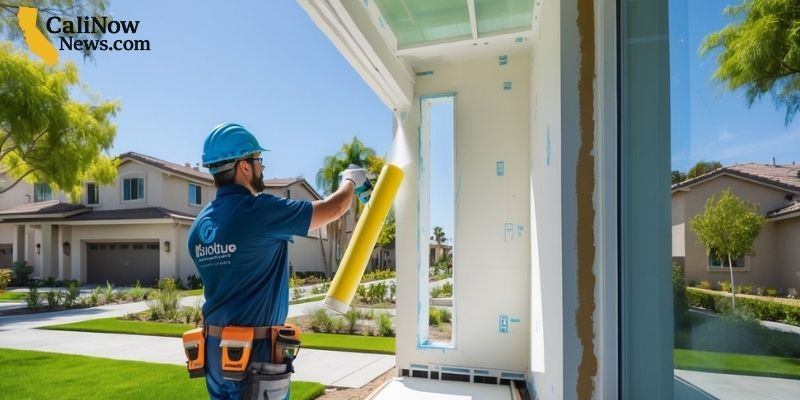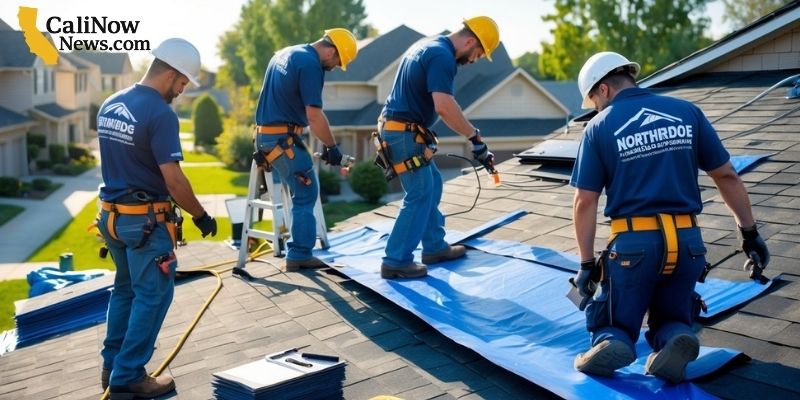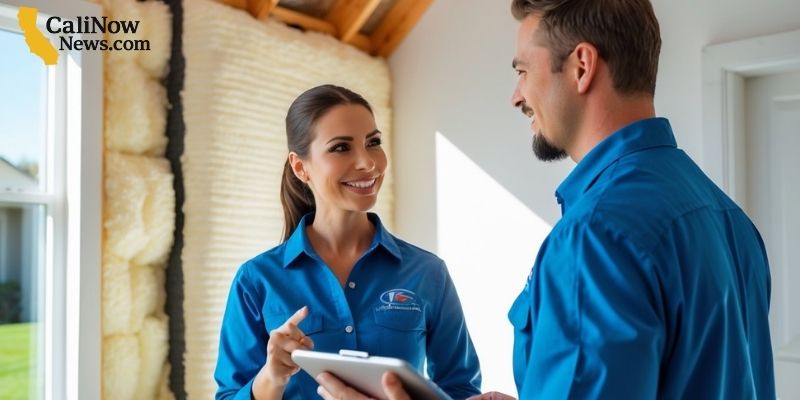Santa Clarita is making progress toward greener living with Air Tight Insulation’s high-R rating foam solutions. These foam insulation products help homes and businesses save energy by reducing heat loss and improving temperature control. Using high-R rating foam insulation can lower energy costs while making indoor spaces more comfortable and efficient.
Air Tight Insulation offers advanced foam insulation that fits well with Santa Clarita’s focus on energy efficiency and sustainability. Their solutions seal gaps and cracks, which prevents air leaks and cuts down on wasted energy. This approach supports the city’s broader efforts to modernize infrastructure and reduce environmental impact.
With growing attention on energy-saving technologies, high-R foam insulation is gaining recognition for its role in long-term energy savings. Property owners in Santa Clarita benefit from improved comfort and reduced utility bills, making it a practical choice for those looking to upgrade their buildings.
How Air Tight Insulation’s High-R Rating Foam Solutions Are Making Santa Clarita Greener

Air Tight Insulation uses advanced spray foam insulation that boosts energy efficiency in Santa Clarita homes. Their solutions optimize thermal resistance while improving air sealing and moisture control to reduce energy costs and environmental impact.
Overview of High R-Value Foam Insulation
High R-value foam insulation is designed to slow heat transfer better than traditional materials like fiberglass or cellulose. Spray foam, especially closed-cell, can reach some of the highest R-values per inch, creating a strong barrier against heat loss or gain.
This foam expands on application, filling gaps and cracks to form an airtight seal. This sealing improves insulation effectiveness by preventing air leaks that reduce performance. Both open-cell and closed-cell spray foam offer options tailored to various parts of a home, including attics and walls.
Closed-cell spray foam also acts as a moisture barrier, which helps protect home structures in Santa Clarita’s climate zone 3. This improves indoor air quality by reducing dampness and mold growth risks. Overall, the foam’s combination of high R-value and sealing properties increases insulation effectiveness drastically.
Energy Efficiency Benefits for Santa Clarita Homes
Spray foam’s high R-value directly cuts heat transfer, reducing the energy needed for heating and cooling. This results in noticeable savings on utility bills for Santa Clarita residents.
The airtight seal created by foam insulation reduces drafts and prevents outdoor air from entering the home. Better air sealing lowers the burden on HVAC systems, making homes more comfortable year-round.
Improved moisture resistance means less damage to insulation over time, maintaining energy efficiency. Additionally, spray foam enhances noise reduction, adding extra comfort inside the home.
By investing in this energy-efficient solution, homeowners in Santa Clarita can expect to see lower energy usage and costs while keeping their homes better insulated against the region’s temperature swings.
Environmental Impact and Greenhouse Gas Reduction
Reducing energy consumption leads to a decrease in greenhouse gas emissions from power plants. Air Tight Insulation’s high-R foam helps cut energy waste by improving home insulation and air sealing.
Less need for heating and cooling means fewer fossil fuels are burned, especially important in climate zone 3 areas like Santa Clarita. This directly contributes to lowering the home’s carbon footprint.
Spray foam’s long lifespan means fewer insulation replacements, which reduces waste and resource use. High-performance insulation also aligns with green building goals by improving energy efficiency.
By using closed-cell and open-cell spray foam, Santa Clarita homes support local efforts to become greener through better insulation choices that reduce emissions and promote sustainability.
Comparing Foam Insulation to Traditional Options in Terms of Performance, Health, and Savings

Foam insulation improves energy efficiency by sealing gaps and controlling airflow better than many traditional materials. It also affects indoor air quality differently and can influence long-term energy costs. Understanding the distinctions between foam and other insulation types helps in making informed choices.
Foam Insulation vs. Fiberglass and Cellulose
Spray polyurethane foam (SPF) offers higher R-values per inch compared to fiberglass batt insulation and cellulose. Closed-cell foam has an R-value up to 7 per inch, while fiberglass and cellulose typically range from 2.2 to 3.8 per inch. Foam expands to fill gaps, creating a strong air barrier that fiberglass and cellulose often lack.
Fiberglass and cellulose are common because they are affordable and easy to install. However, fiberglass can lose effectiveness if compressed or wet. Cellulose, made from recycled paper, provides decent sound absorption but may settle over time.
Rigid foam panels like polyisocyanurate and extruded polystyrene (XPS) also offer good thermal resistance but do not seal air leaks as well as spray foam. Expanded polystyrene (EPS) is less expensive but has lower R-value and moisture resistance.
Impact on Indoor Air Quality and Occupant Health
SPF insulation reduces air infiltration, which helps prevent mold growth and keeps indoor air cleaner. Unlike fiberglass batt insulation, which can release tiny glass fibers causing skin irritation and respiratory issues, foam does not shed particles.
Fiberglass and mineral wool require protective gear during installation due to skin and lung irritation risks. Cellulose is treated with fire retardants but can raise dust levels when disturbed, potentially aggravating allergies.
Spray foam insulation contains chemicals that must be applied correctly to avoid off-gassing. Once cured, SPF is stable and does not emit harmful fumes. Proper professional installation is essential to maintain a healthy indoor environment.
Long-Term Energy and Cost Savings
Although spray foam has higher upfront costs, it often reduces heating and cooling bills significantly due to superior sealing and higher R-values. This results in lower energy consumption and less strain on HVAC systems.
Fiberglass and cellulose generally cost less to install but may require more energy to maintain comfortable indoor temperatures. Over time, settling or moisture intrusion in these materials can reduce effectiveness, leading to increased expenses.
Using rigid foam board insulation as a thermal break can complement other insulation but alone cannot match the air-sealing properties of SPF. Spray foam also adds structural strength, potentially lowering future maintenance costs.
| Insulation Type | R-Value per Inch | Air Sealing Ability | Health Concerns | Installation Cost | Longevity/Efficiency |
|---|---|---|---|---|---|
| Closed-cell SPF | 6.5 – 7 | Excellent | Requires professional care | High | Long-lasting; maintains R-value |
| Fiberglass Batt | 2.2 – 2.7 | Poor to moderate | Skin/lung irritation risk | Low | Can lose efficiency if wet |
| Cellulose | 3.2 – 3.8 | Moderate | Dust and allergen concerns | Low-medium | May settle; fire retardant |
| Polyisocyanurate Boards | 6 – 6.5 | Moderate | Low | Medium | Good thermal resistance |
| Expanded Polystyrene (EPS) | 3.6 – 4 | Low | Low | Low | Less moisture resistant |
| Extruded Polystyrene (XPS) | 5 | Moderate | Low | Medium | Durable and moisture resistant |
This information helps highlight crucial differences in performance, health impacts, and savings when comparing foam insulation to traditional materials.
- Air Tight Insulation of Santa Clarita
- 25000 Avenue Stanford, Santa Clarita, CA 91355, United States
- +16614517814
- https://airtightinsulationca.com/santa-clarita/
Frequently Asked Questions
High-R rating foam insulation improves heat resistance, reduces energy use, and enhances comfort. It is effective for both new and older buildings and helps lower heating and cooling costs. Using air tight methods limits air leaks, making homes more energy-efficient and eco-friendly.
What are the benefits of high-R rating foam insulation?
High-R rating foam offers better thermal resistance than many traditional materials. It helps keep indoor temperatures stable, reducing the need for heating and cooling.
It also seals gaps and cracks, preventing air leaks. This improves comfort and lowers energy bills.
How does air tight insulation contribute to a greener environment?
Air tight insulation reduces the energy needed to heat or cool buildings. Less energy use means fewer greenhouse gas emissions.
The materials used in high-R foam often last longer, so they don’t need to be replaced as frequently. This reduces waste.
What is the difference between traditional and high-R rating insulation materials?
Traditional insulation may include fiberglass or cellulose, which have lower R-values. High-R foam has higher thermal resistance per inch.
Foam insulation also expands to fill spaces completely, while traditional materials may leave gaps. This creates a better seal against air flow.
Can high-R rating foam solutions be applied to existing structures?
Yes, foam insulation can be added to attics, walls, and crawl spaces in older homes. It can improve energy efficiency without major remodeling.
Professional teams like Air Tight Insulation of Santa Clarita provide these upgrades safely and effectively.
How does insulation contribute to energy efficiency in homes and buildings?
Insulation slows down heat transfer between inside and outside. This means heating systems work less in winter, and cooling systems work less in summer.
Better insulation reduces energy waste and increases overall comfort by maintaining stable indoor temperatures.
What are the long-term cost savings associated with installing air tight high-R rating foam?
High-R foam lowers monthly heating and cooling costs by keeping temperatures steady.
It also reduces the strain on HVAC systems, which can extend their life and lower repair expenses. Over time, energy savings often cover the installation cost.




